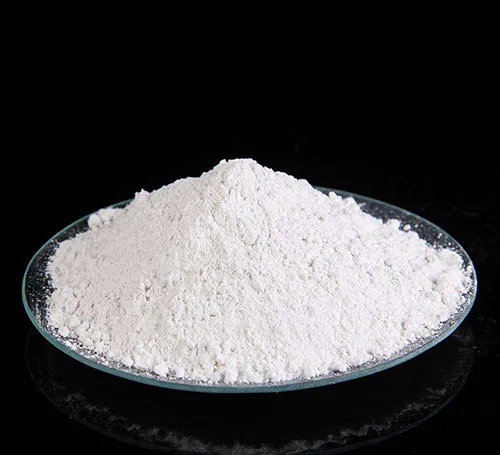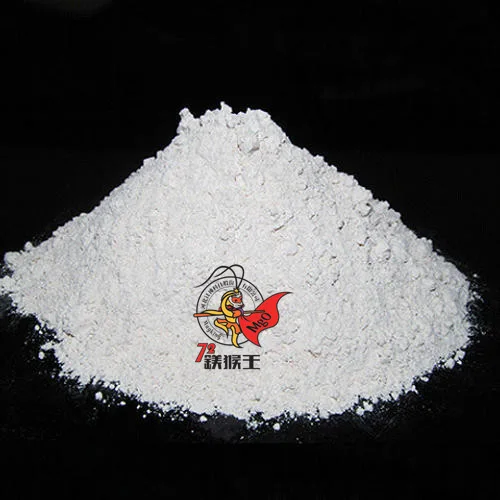Heavy magnesium oxide (MgO) is a crucial industrial material with a wide range of applications due to its high density, low surface area, and thermal stability. Unlike light magnesium oxide, which is preferred for applications requiring high reactivity, heavy magnesium oxide excels in areas where structural integrity, heat resistance, and density are critical. This article explores the definition, properties, and major uses of heavy magnesium oxide, with examples of practical applications.
Definition and Basic Properties
Heavy magnesium oxide is distinguished by its higher particle density and lower specific surface area compared to light magnesium oxide. This difference primarily arises from its production method, which results in larger, denser particles with reduced porosity. As a result, heavy magnesium oxide exhibits lower reactivity but superior mechanical strength and thermal resistance. Key properties include:
- High Density: Provides superior compaction and mechanical strength.
- Low Reactivity: Ideal for applications requiring stability over reactivity.
- High Thermal Resistance: Suitable for extreme temperature environments.
- Tight Structure: Reduces porosity, making it effective in refractory and structural applications.
Heavy Magnesium Oxide Uses
Refractory Materials
One of the primary applications of heavy magnesium oxide is in refractory materials. Due to its high melting point and excellent thermal stability, it is used in the manufacturing of firebricks, crucibles, and linings for industrial furnaces. Heavy magnesium oxide improves the resistance of refractory products against slag erosion, high temperatures, and thermal shocks, making it indispensable in steelmaking, glass production, and non-ferrous metal industries.

Building Materials
Magnesium Cementitious Materials
Heavy magnesium oxide is a component in magnesium-based cementitious materials, such as magnesium oxychloride and magnesium phosphate cements. These materials exhibit superior strength, quick setting times, and resistance to cracking. They are widely used in flooring, wall panels, and eco-friendly construction materials.
Flame Retardant Additives
Magnesium oxide is also employed as a flame retardant in construction materials. It enhances fire resistance in panels, coatings, and insulation materials, helping to improve building safety by reducing combustibility and smoke production.
Environmental Protection Fields
Wastewater Treatment
Heavy magnesium oxide serves as an alkaline neutralizer in wastewater treatment. Its stable and slow-reacting nature makes it suitable for gradual pH adjustment in acidic waste streams. It is particularly effective in removing heavy metals through precipitation reactions.
Flue Gas Desulfurization
In power plants and industrial facilities, heavy magnesium oxide is used in flue gas desulfurization (FGD) processes to capture sulfur dioxide (SO2) emissions. Its high-density properties allow for efficient absorption and reaction with SO2, forming environmentally benign byproducts such as magnesium sulfate.
Rubber and Plastic Industry
Rubber Reinforcement Agents
In rubber manufacturing, heavy magnesium oxide is utilized as a reinforcement agent to improve mechanical strength and heat resistance. It enhances the durability and wear resistance of rubber products, making it valuable in the production of tires, seals, and industrial gaskets.
Flame Retardant Synergists
In plastic and polymer applications, heavy magnesium oxide acts as a flame retardant synergist, often in combination with other flame-retardant materials. Its ability to absorb heat and release water vapor during combustion reduces flammability and smoke production.
Agriculture and Feed
Soil Improvement
Heavy magnesium oxide is used in agriculture to correct soil acidity and supply essential magnesium to crops. Its slow-release properties make it ideal for long-term soil conditioning, particularly in magnesium-deficient soils.
Feed Additives
As a feed additive, heavy magnesium oxide provides a stable source of magnesium for livestock. It helps prevent magnesium deficiency in animals, reducing the risk of grass tetany in cattle and improving overall livestock health.
Other Applications
Ceramic Industry
In the ceramics industry, heavy magnesium oxide is used to enhance the strength and thermal resistance of ceramic products. It is incorporated into advanced ceramics and electrical insulators due to its excellent refractoriness.
Electronic Materials
Magnesium oxide is utilized in the electronics sector for applications such as substrates for thin-film transistors and insulating layers in semiconductors. Its dielectric properties and stability make it valuable in high-performance electronic devices.
Catalyst Carriers
Heavy magnesium oxide serves as a catalyst support in chemical processes. Its thermal stability and surface characteristics enable it to act as an effective carrier for various catalysts used in petrochemical and environmental applications.
Difference Between Heavy Magnesium Oxide and Light Magnesium Oxide
| Property | Light Magnesium Oxide | Heavy Magnesium Oxide |
|---|---|---|
| Density | Low (0.2–0.5 g/cm³) | High (≥0.7 g/cm³) |
| Particle Size | Small particles, porous and loose | Coarse particles, dense and hard |
| Specific Surface Area | Large (10–100 m²/g) | Small (Usually <10 m²/g) |
| Calcination Temperature | Low (450°C – 900°C) | High (above 1000°C) |
| Reactivity | High (fast reaction) | Low (stable at high temperatures) |
| Applications | Catalysts, rubber, food, electronics | Refractories, construction, ceramics |
Conclusion
Heavy magnesium oxide is a versatile material with applications spanning refractory industries, construction, environmental protection, rubber and plastics, agriculture, ceramics, and electronics. Its unique properties, such as high density, thermal resistance, and low reactivity, make it indispensable in industrial processes where stability and durability are paramount. Understanding these applications allows industries to utilize heavy magnesium oxide effectively, optimizing performance and sustainability.
FAQs
What is the difference between heavy and light magnesium oxide?
Heavy magnesium oxide has a higher density, larger particle size, and lower reactivity than light magnesium oxide. These properties make it more suitable for refractory materials, construction, and industrial applications, while light magnesium oxide is preferred for high-reactivity uses like pharmaceuticals and chemical synthesis.
How does heavy magnesium oxide improve refractory materials?
Heavy magnesium oxide enhances refractory materials by increasing their resistance to high temperatures, thermal shocks, and chemical corrosion. It contributes to the durability and longevity of refractory bricks, furnace linings, and high-temperature ceramics.
Can heavy magnesium oxide be used in environmental applications?
Yes, heavy magnesium oxide is used in wastewater treatment, flue gas desulfurization, and soil conditioning. Its alkaline properties help neutralize acidic pollutants, and its stability makes it effective in long-term environmental management applications.


